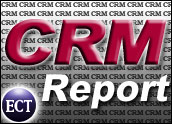
Law firms stand to gain as much as anyone from the advances being made when it comes to CRM systems, and CRM software providers are keen to fill this potentially lucrative market niche.
LexisNexis, Microsoft and Salesforce.com are among the firms out there offering CRM systems specifically geared for professional services organizations, but are law firms getting the return and results they expect from their CRM investments? The answer is often no.
The fundamental reason for this seems to have as much to do with the nature of the legal profession and the organizational management of law firms as anything else, as well as the willingness and ability of CRM developers to build close relationships and devote the time and resources necessary to delve deeply into and understand the ways lawyers and law firms work.
Not Much Different
“CRM for lawyers and law firms isn’t — or shouldn’t be — different than for other businesses. In fact, CRM for attorneys should be easier. I don’t know of a lawyer who doesn’t track their time by quarters or tenths of hours, relating that time to both the client served, the matter being worked on, and the type of work being done. They do this, obviously, to be able to bill,” explained Andy Havens, creator of TinkerX and formerly chief marketing officer for a major corporate law firm.
“Many firms also track company and industry information very closely as part of their conflict-clearing procedures. They do this, again obviously, to mitigate the possibility of conflicts, malpractice and — one hopes — bad client relations. Many firms also, once a conflict has been established, end up referring conflicted work elsewhere, as they wish to assist clients, even if they can’t do the work themselves.”
A continuous stream of potentially valuable CRM information flows through the typical law firm on a daily basis, yet lawyers and their firms typically are not able to leverage it to the degree they would like to, Havens told CRM Buyer.
“All of these systems/processes can be mined for very, very valuable CRM data in and of themselves. If they were augmented by some administrative practices — usually performed by staff — they could provide truly rich data about what kinds of work is producing the most profit, the most referrals and the least amount of administrative waste, i.e. what the most efficient and effective areas for business development are.”
Building, Mapping Relationships
LexisNexis provides software and information services to law firms and other professional organizations. The latest of its InterAction CRM solution, Version 5.6, is designed specifically for use in “fee-earner” environments. It was released in March.
“There are a couple of things [that stand out in relation to CRM] when you look at law firms and other professional services organizations,” Tracey Blackburn, LexisNexis product marketing manager, told CRM Buyer. “First, they are really about building relationships; second, most [CRM software offerings] are really about sales force automation, lead management really, whereas CRM in a professional services organization is really about building relationships for business development.”
Hence, LexisNexis has focused on building features and functionality into InterAction that support lawyers’ needs to build and track relationships. “From a relationship building perspective what Interaction offers is relationship mapping — who knows whom, areas of expertise, up-to-date case work and litigation — and the ability to coordinate and understand activities — tracking e-mail, documents, all communications and the companies involved so you have a good view of what’s going on internally.”
Reaching Out
Timely, accurate, comprehensive access to targeted information from outside sources is another key aspect of meeting law firms’ CRM needs and another focal point for LexisNexis and InterAction. It’s one where LexisNexis can leverage its widely used, eponymous core database and information services system to gain a leg up on the competition.
Reaching out, linking into and combining information from external sources is a third area of concentration for InterAction developers, affording lawyers and their firms “a unique 360-degree view of a prospect or client,” according to Blackburn. Proprietary, patented database algorithms ensure accuracy and validity of data, while links to leading legal information services, such as Martindale Hubbell’s directory service, have made LexisNexis a core part of the IT supporting most large law firms.
The foundation for incorporating Web 2.0 applications, such as wikis, blogs and other social networking tools, into InterAction are likewise already in place, and LexisNexis is moving in that direction, according to Blackburn. “It’s a two-step process,” she elaborated. “Technologically speaking, InterAction is easy to integrate to relationship management applications like Outlook, which makes it easy to use and seamless, but at the same time we need to enable a lot in the area of privacy as it relates to our centralized database.”
LexisNexis is exploring avenues that may lead farther down the Web 2.0 path, such as having discussions with social networks like LinkedIn, as well as continuing to beef up its information services. “The building blocks are there, the foundation is there, the product is getting more and more robust. With this latest release we have more external content integration in the way of news and business.”
CRM: More Than Software
However, perhaps the biggest problem to overcome when it comes to law firms getting the most out of CRM systems lies not in the supporting technology but in the way lawyers work and law firms are run.
“One of the things I’ve told clients many times is that software will not solve your CRM issues,” Havens commented. “And let me be clear about the No. 1 resource that most firms are unwilling to invest in programs like these: attorney time. Lawyers are busy people. And unlike many other professionals, they bill by the minute, essentially. That makes it seem like any minute not spent billing is a minute wasted. Wrong.
“You can bill only so many hours in the day and then you max out. And that is not an investment in the future of your firm, but simply paying today’s bills. If a firm can’t commit 2 to 5 percent of its attorneys’ billable time to CRM and other business development efforts, then they are, essentially, abandoning their future to chance. We see so many firms dry up for apparently no reason, but there is a reason. It’s the mentality of looking at your shoes when you’re walking a difficult path. Yes, you need to put your feet down carefully — but every now and then you need to look up and see that there’s a brick wall in front of you.”
There’s no shortage of CRM software capable of tracking the data lawyers need; the problem is that it’s often ignored or left by the wayside, according to Havens. “If a firm is using a good billing package and conflict tracking system, my advice is to initially work with a CRM consultant to pull as much data out of those systems as possible in order to determine what the inputs and outputs of a more in-depth program might be.”
Prioritizing a Process
At any law firm, the first priority for a CRM project is to define goals, metrics and resources, Havens continued. “That which is not measured cannot be improved — period. If you have a success, and don’t know why, it might as well be luck, and you can’t count on a repeat. If you fail, you will have no idea why, and you won’t harvest valuable knowledge about how to not fail next time. If you don’t have at least a rough idea of what resources you’re willing to put towards an effort, you won’t know if your goals are realistic.”
Law firms should be able to design an efficient CRM process regardless of the software they have in place, he explained. “You need a commitment to robust, official, appropriate processes first. “Oftentimes firms think that buying an expensive application or suite will solve their problems in this regard, only to discover that they don’t have the cultural or business wherewithal to implement either the processes needed or, in some cases, the training for the new applications. So you end up with an expensive, technological boondoggle that makes the attorneys even more resistant to CRM since ‘that system we bought was just a waste of time and money.’
“I’ve said that if you can’t make your goal processes work with a test group of a few attorneys, secretaries and billing people. You clearly won’t be able to make it work with the whole firm and a new piece of software.
“CRM requires a commitment to tracking client data from the stage of pre-customer — someone who’s never heard of you — through billing and ongoing cross-selling and future-selling activities. If a firm can’t make decisions about what they expect the input of those data to tell them, or what the outcomes to be, no software will help.”






















































